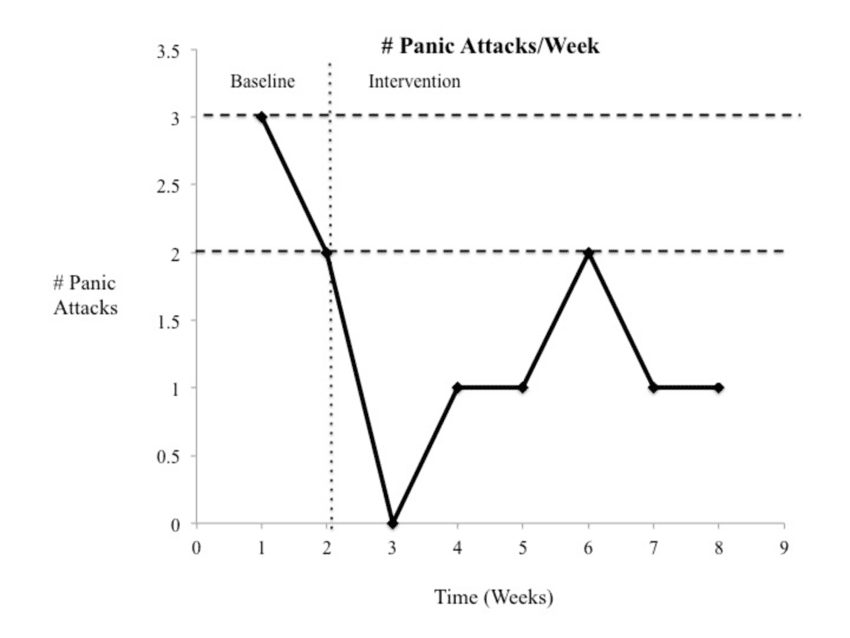Panic Disorder Test
3 Min Free Panic Disorder Test
Who Can Benefit From This Panic Disorder Test?
The Panic Disorder Test can benefit anyone who suspects they may be experiencing symptoms of panic disorder. Panic disorder is a mental health condition characterized by recurrent and unexpected panic attacks, which are sudden periods of intense fear or discomfort that can last several minutes. The symptoms of panic disorder can be distressing and impact an individual’s daily life, relationships, and functioning.
This assessment may be particularly useful for individuals who have experienced panic attacks, have a family history of panic disorder, have difficulty controlling feelings of fear or anxiety, or avoid certain situations or places due to fear of panic attacks. The assessment can help individuals better understand their symptoms and determine whether they may benefit from seeking support from a mental health professional.

Panic Disorder Test Accuracy

The accuracy of a Panic Disorder test can depend on several factors, including the honesty and accuracy of the responses provided by the user, and the individual’s current state of mental health. It’s essential to note that a Panic Disorder test is not a substitute for a formal diagnosis by a licensed mental health professional and it is best used as a screening tool to identify potential symptoms and risk factors for panic disorder.
However, many Panic Disorder tests have been designed and validated by mental health professionals and researchers to ensure their accuracy and reliability. These tests typically involve a set of standardized questions and scoring procedures to provide an objective measure of panic disorder symptoms. It’s essential to remember that while a test can provide useful information, it should not be used in isolation to diagnose or treat panic disorder.
Types of Panic Disorder Test
Panic Disorder Severity Scale (PDSS):
This is a self-report questionnaire that assesses the severity of panic disorder symptoms, including frequency and intensity of panic attacks. The PDSS consists of seven items and is widely used in clinical settings.
Panic and Agoraphobia Scale (PAS):
Assesses symptoms of panic disorder and agoraphobia, which is the fear of being in situations where escape may be difficult or help may not be available. The PAS consists of 13 items and is commonly used to screen for panic disorder.
Panic Disorder Self-Assessment Tool (PAT):
This is a self-report questionnaire that assesses symptoms of panic disorder based on DSM-IV criteria. The PAT consists of 12 items and can help identify individuals who may benefit from further evaluation.
Anxiety Sensitivity Index (ASI):
This is a self-report questionnaire that assesses fear of anxiety-related sensations, such as racing heart or sweating. The ASI can help identify individuals who may be at risk for developing panic disorder.
Structured Clinical Interview for DSM-5 (SCID):
This is a diagnostic interview that assesses for the presence of panic disorder and other mental health conditions. The SCID involves a structured or semi-structured interview with a mental health professional.
Anxiety Disorders Interview Schedule for DSM-5 (ADIS-5):
Assesses for the presence of panic disorder and other anxiety disorders. The ADIS-5 involves a structured interview with a mental health professional and can help identify specific anxiety disorders that an individual may be experiencing.
Treating Panic Disorder
Panic disorder can be treated effectively with a combination of psychotherapy, medication, and self-care strategies. Here are some examples of treatment options:
- Cognitive Behavioral Therapy (CBT): This is a type of talk therapy that focuses on changing negative thought patterns and behaviors that contribute to panic disorder. CBT may involve exposure therapy, where individuals gradually face feared situations to desensitize them to triggers.
- Medications: Antidepressants and anti-anxiety medications may be prescribed to treat symptoms of panic disorder, such as anxiety and panic attacks.
- Relaxation Techniques: Engaging in relaxation techniques, such as deep breathing, meditation, and progressive muscle relaxation, can help individuals manage symptoms of panic disorder and reduce stress levels.
- Lifestyle Changes: Making lifestyle changes, such as reducing caffeine intake, regular exercise, and improving sleep habits, can help individuals manage symptoms of panic disorder and improve overall well-being.
- Support Groups: Joining a support group can provide individuals with social support and a sense of community, which can help reduce feelings of isolation and improve mood.

